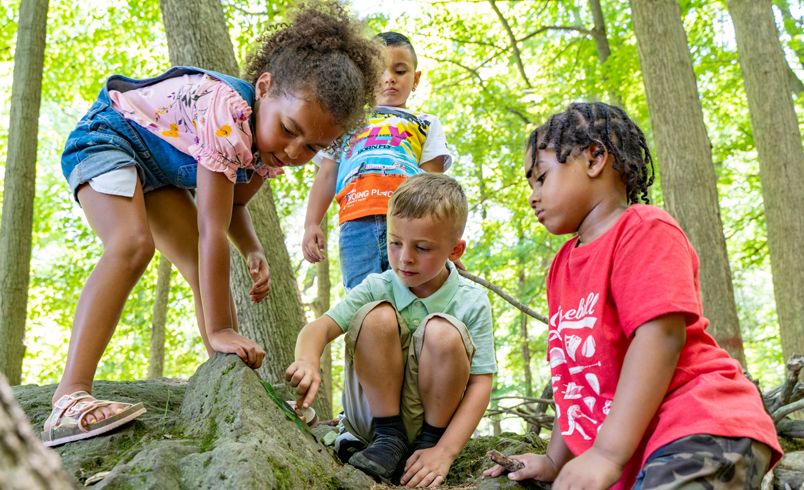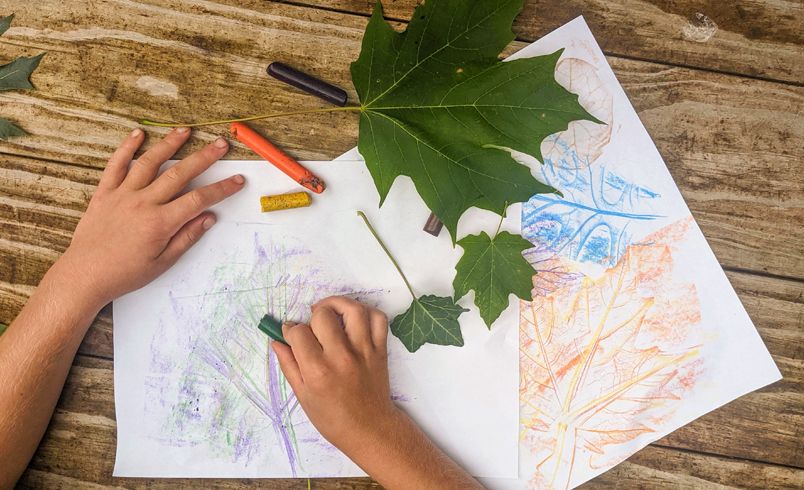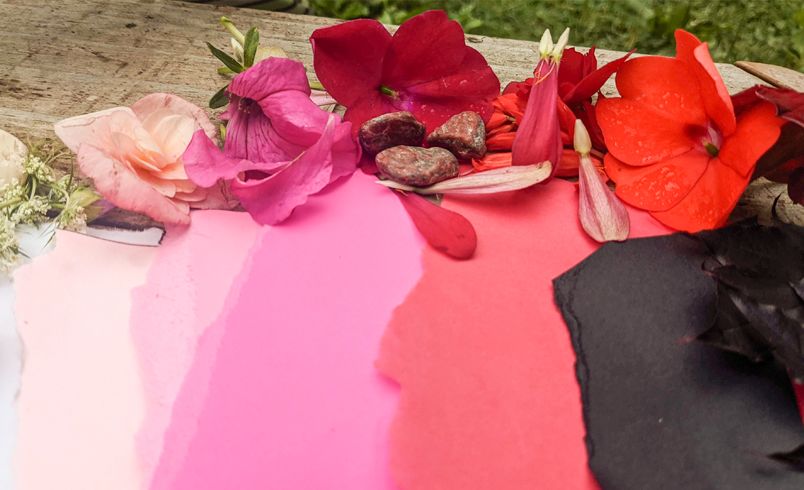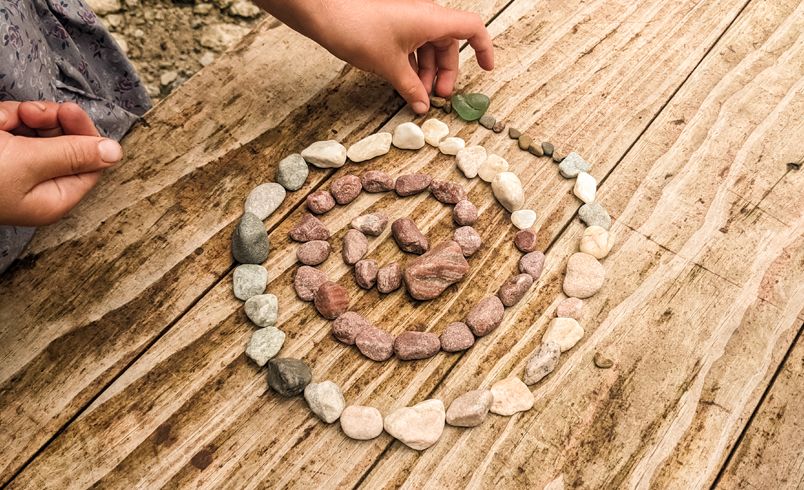Get Children Outside!
The importance of outdoor play for young children
| August 2022Outdoor play for children is an important topic. For many years, as an educator, I lived it. I fought for it from the cold winters in Massachusetts, where we bundled up to go outside, to the blistery summers of Florida, where we smeared on the sun lotion. Wherever we were, WE WENT OUT.
In the past, I thought the US was lax in the amount of outdoor playtime provided to children, but now we are totally deficient. The average child in the United States has only 4 to 7 minutes of outdoor playtime each day. I do not want to even think about how this number compares to how much time they spend in front of a screen. This is not OK.
At the schools in Reggio Emilia, in Northern Italy, almost any time you visit you will find at least one group of children outside doing a multitude of activities. They may be painting on large easels, exploring with dramatic play props, problem solving a project in a small group, running, etc. When I visited the Pikler Institute in Budapest, before they transitioned from being an orphanage to a teaching institute, I was amazed to see that children spent half the day outside. They even had a second crib outside (under an awning).
I do see some signs of change for the better in the United States. There are an increasing number of “forest schools” opening throughout the country. The demand for outdoor schools increased during the pandemic, and many schools experimented with moving their classrooms outside. Unfortunately, though, the number of these (and similar schools) is still small. What is keeping so many children inside, even though the benefits are clear and abundant? From boosting physical and mental health to promoting problem solving and socialization skills, time spent outdoors is critical to the healthy development of each child.
- Outside time enhances overall health
Sunlight is the best natural source of Vitamin D, the vitamin necessary to absorb the calcium needed to build bones. It is beneficial to the immune system, sleep, and mood.
Large muscle play is a natural consequence of being outdoors. Children use large muscles in a way that is restricted indoors by space and furniture. Building muscle strength and control is vital for physical development. Furthermore, outside time helps to combat the growing problem of obesity in children reducing the negative consequences of obesity, such as heart disease and diabetes.
- Outside time increases intelligence
The less rigid environment of the outdoors gives allows children to explore and experiment freely. The more children learn to trust themselves, the more they are willing to try new things and to take appropriate risks. This increases learning, problem solving, and creativity.
In addition, collaborative outdoor play offers abundant opportunities to learn socialization skills while practicing negotiating with their friends. Think of all the communication skills gained when children come up with ideas for games to play outdoors and discuss the rules for these games. This type of play does not occur in front of a screen.
- Outside time is naturally inclusive
Outdoor activities are naturally inclusive of all learning styles, needs, and levels. Growing a garden, creating a game with rules, or outdoor pretend play allows many levels of participation. The possibilities outside are endless, and they include everyone in an authentic manner. Executive function is maximized for all the children, which is especially important for those who have issues with ADHD or autism.
-
Outside time promotes appreciation for nature
Being outside provides the best way for children to learn to appreciate nature. It allows children to experience and see nature as well as promoting a sense of peace and mindfulness. An appreciation of nature today may help save it in the future.
Activities to Do Outside
The outdoors offers so many wonderful opportunities for different activities. Just look around and use your imagination. Remember, a great activity does not require expensive toys, with fancy props. The outdoors provides such a rich environment that a few simple items are all you need to create activities that are both fun and educational. Following are descriptions of three of my favorites:
I just want to stress that the activities are not outside crafts to be done inside. THE POINT IS TO GET CHILDREN OUTSIDE!
Activity 1: Making Rubbings
To begin this activity, take the children on a leaf search. Make sure you bring bags or other containers to hold the leaves the children collect.
There are many math and language concepts you may naturally discuss during and after the collection. For example:
- Which leaf is biggest?
- How many do you have?
- How do they feel?
Making rubbings from the leaves is a simple process, as long as certain supplies are set up in advance. You will want to guide the children through the following steps:
- Place each leaf on some sort of hard surface, such as a clipboard or plastic shoebox top.
- Hold the leaf in place with masking tape or painter’s tape (or something else that is easy to remove).
- Place a sheet of paper over the leaf.
- With the leaf positioned between the hard surface and the sheet of paper covering it, rub over the paper with the side of a crayon that has had the paper peeled off of it.
- As patterns emerge from the rubbings, encourage children to see the beauty of nature and to look at patterns and textures. This is an opportunity for them to compare and contrast items.
|
Hints:
|
There are some natural extensions to this activity: There is no reason to limit yourself to leaves. You can also make interesting rubbings by placing paper over just about anything with texture. There are a multitude of ways to go on “texture hunts”.
This could be done on the playground, where the children look for items to suggest to the group that have texture for rubbings. Perhaps, someone will suggest the lettering on a play structure, the bricks of the school building, or the bark of a tree trunk. Tree bark is particularly interesting, as the children can compare the patterns produced by different types of trees.
Activity 2: Using Paint Color Chips
Paint color chips are great for a variety of children’s activities and are easily found at your local hardware or paint store. Usually, they will be generous and allow you to take some for a classroom activity. (Make sure you select paint chips with colors that can be found outside.)
Two of my favorite paint chip activities I call “Scavenger Match” and “Match & Sketch.”
- Scavenger Match: Obtain some metal rings, then punch holes in the paint chips and put a few on each ring. Divide your class into groups and give each group one ring and ask them to find items that match the color of the paint chips on their ring.
- Match & Sketch: Obtain some clipboards and then attach a selection of paint chips to each one. Then divide the class into groups and give one clipboard to each and ask the children to sketch items they find that match the colors of the paint chips on their clipboard. Encourage children to observe each other’s work and socialize.
Activity 3: Working with Stones
Simple stones can provide the basis for extraordinarily rich activities. Of particular note is an approach developed by Dr. Diana Suskind, which she calls “Stonework Play.” Her approach, in basic terms, is built around five steps: (1) gathering the stones, which allows each student to exercise his or her own judgement as the stones are selected, (2) constructing an artwork with the stones, (3) drawing a picture of the artwork, (4) telling others about your work, and (5) being respectful of the other students’ works.
Conclusion
As you decide what activities are right for you and the children in your class, remember to follow your own interests too. Go outside and see what captures your own attention. The more an idea captures your own imagination, the more you will be able to share your excitement with the children and also get them excited.










